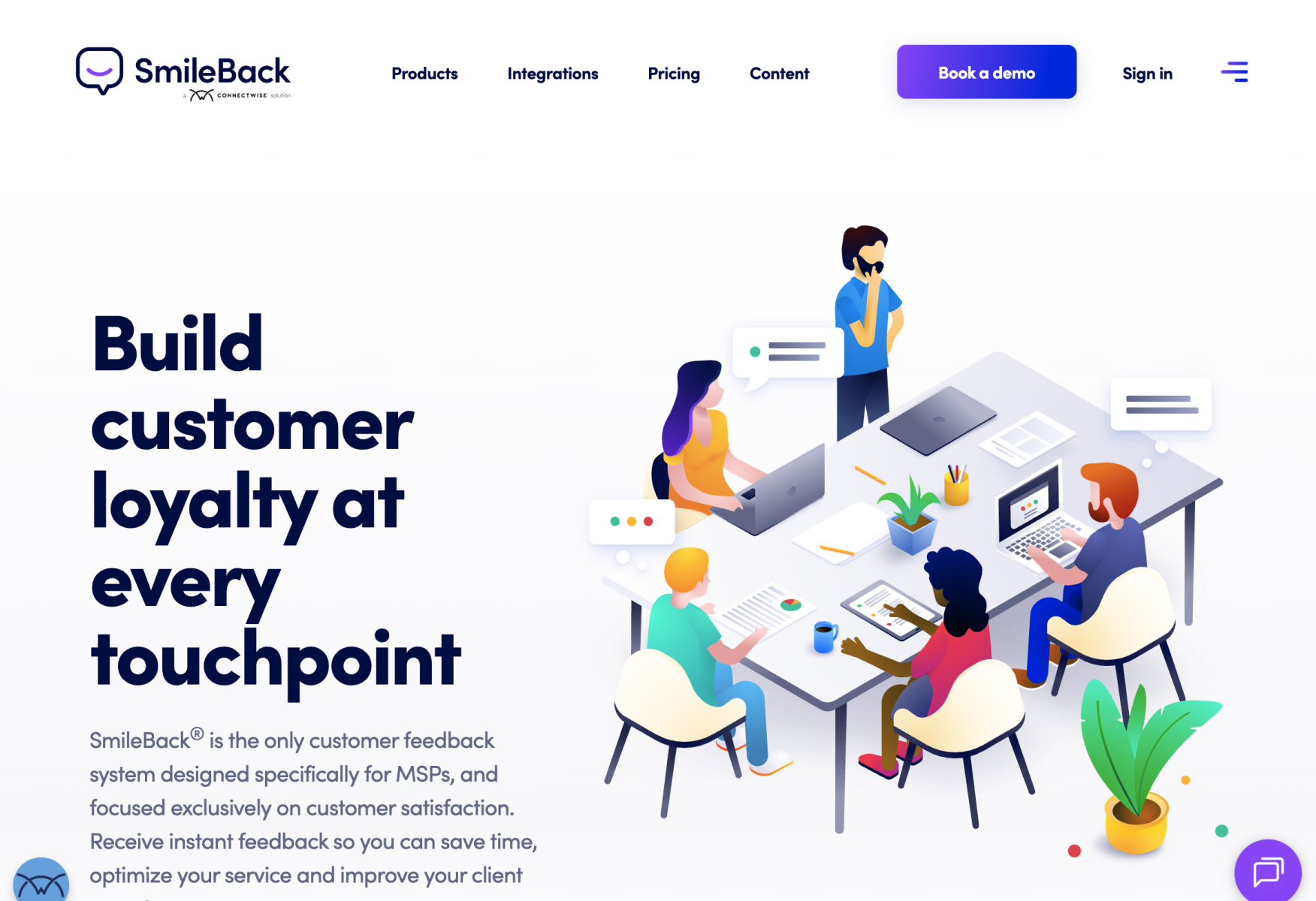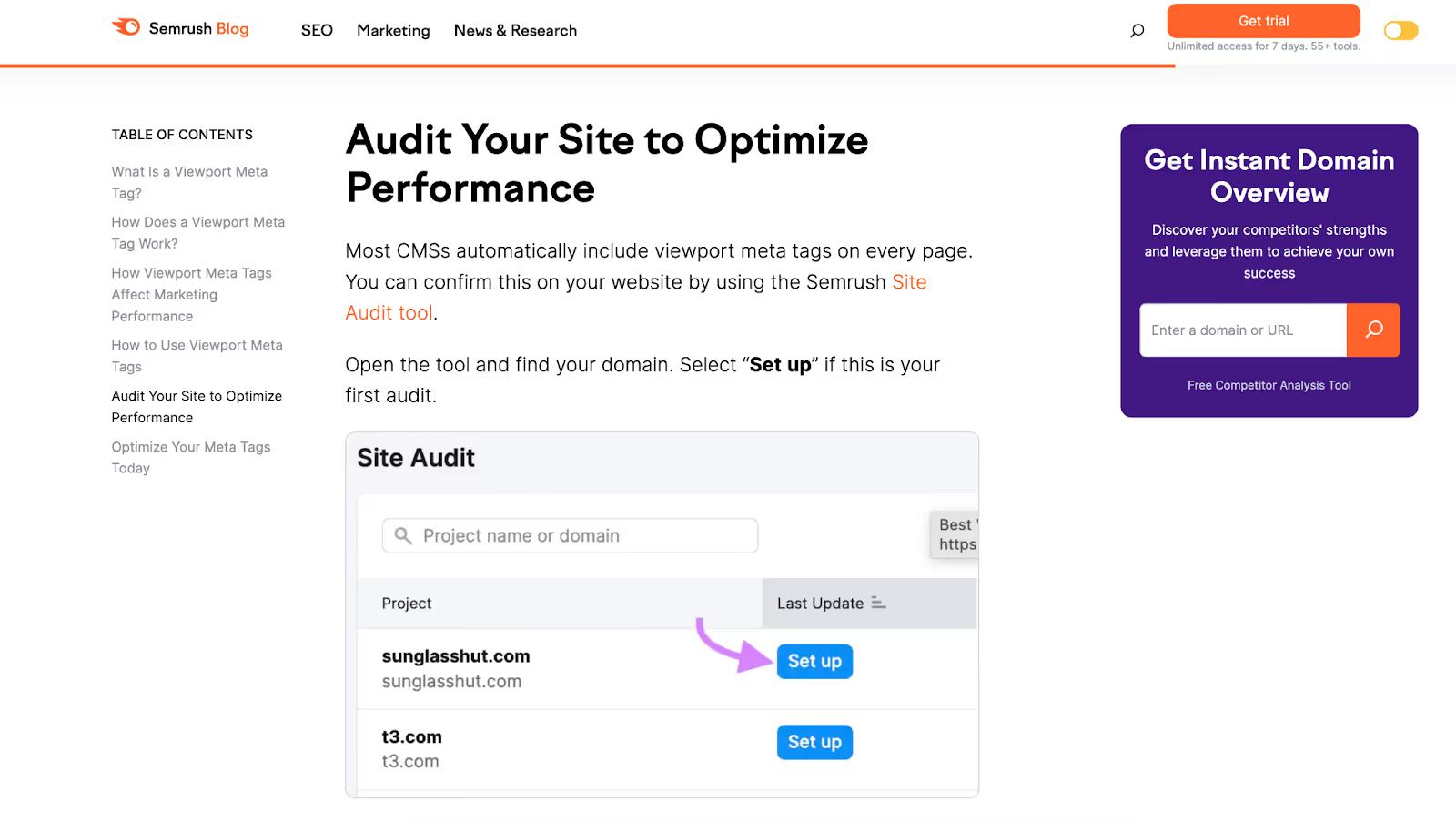When serving a niche audience, attracting in-market buyers with SEO can be tricky. Sometimes, it's best to serve your customers with content and messaging on the channels and communities where they’re most active.
Which is why we helped SmileBack produce helpful content that attracted a wider audience of MSPs while empowering existing users to use the platform to its full potential. This methodology fueled their user acquisition, activation, and retention efforts leading up to their ConnectWise acquisition.
SmileBack needed thought leadership content to attract a niche audience
By solving a specific problem for a niche audience, SmileBack generated a large user base within their first year of business.
To reach the next stage of growth, they needed to maximize awareness in the MSP space while generating and converting more trial users into paid subscribers.
[[testimonial1]]
Grizzle built a content engine across social and owned channels
To achieve the ambitious growth goals leading up to their acquisition, SmileBack wanted to take a direct-to-buyer approach to organic marketing.
This meant identifying the right channels and producing thought leadership and product-led content that taught MSPs how to solve their problems.
1. Developing a content strategy based on domain research and customer interviews
Fully understanding our client’s audience is foundational to any successful strategy. For SmileBack, this meant deeply embedding ourselves into their audience of MSP leaders and learning as much as we can about their goals, problems, and jobs-to-be-done (JTBD).
Doing so not only helped us understand their customer feedback challenges, but the challenges they face every day as IT service operators.
The strategic process is split into three phases:
- Data-driven research: Identify and analyze the publications, blogs, influencers, and other sources that MSPs follow to uncover trends at a macro level.
- Qualitative research: Conduct customer and subject matter expert interviews to dig deep into buyer motivations and add context to our research to truly understand the challenges MSPs face.
- Strategy development: Produce a product-led organic growth roadmap—complete with a distribution strategy and full editorial calendar.
Through this process, we found a handful of industry experts to collaborate with and make our content more authoritative—all while tapping into an existing audience for content distribution efforts.
We used a content briefing and research process that tapped into the expertise of the MSP community, allowing us to produce content across social and email channels to cement SmileBack’s team as thought leaders in the space.
Most importantly, this helped us fully understand the inner workings of the MSP business model, the language of their buyers, and their motivations and challenges.
2. Establishing thought leadership through content, newsletters, and social media
With a strategy and editorial calendar at hand, we set out to produce high-quality content that educated SmileBack’s audience and accelerated the user journey.
To do this, we craft strategic and actionable blog content that helps MSPs solve their biggest customer retention and marketing challenges.
To amplify reach and awareness, every piece of owned content is repurposed into social assets across employee accounts and company profiles.
Finally, we launched an email marketing program that leveraged:
- Newsletters: Building an owned audience, we helped SmileBack transform email into a media asset that MSPs are excited to open and read.
- Campaigns: Producing email copy and sequences to promote blog content, webinars, and product releases.
- Automations: Auditing and mapping new user journeys for trial, post-trial, and paid subscriber segments.
Workflows were created for customer segments and user behavior within the product at critical milestones. For example, prompting the user to set up their first CSAT survey after signing up for a trial.
3. Reducing time-to-value with product marketing content
For PLG companies, demonstrating product value as quickly as possible is critical for user activation.
SmileBack has a dedicated customer success team to guide leads through specific use cases, but this comes with limited scalability.
To reduce time-to-value and increase the number of “aha moments,” we produce two types of product marketing content:
- Use case content: Show MSPs how to use their CSAT and NPS data to improve quarterly business reviews, team performance, processes, and more.
- JTBD content and guides: Produce technical content with step-by-step instructions accompanied by templates for survey emails, Google Review prompts, etc.
The latter was produced after dozens of conversations with SmileBack users who expressed a common sticking point: setting up surveys and email templates.
Simply put: MSP leaders don’t want to jump through hoops to implement customer feedback solutions. They want someone to do it for them. So, we did just this by packaging up the templates and other assets and offering them within our articles.
These guides are then delivered by email and in-app Intercom messages based on user behavior, giving them the content they need right when they need it.
Finally, we enhanced SmileBack’s suite of product marketing content through our end-to-end video production service:
Using explainer videos like the one above, we’re able to communicate the benefits around core product features and educate buyers and users alike to generate trials and further improve product adoption.
SmileBack's partnership with Grizzle increased revenue by 47%
Through Grizzle’s end-to-end content marketing and organic growth methodologies, SmileBack was able to increase customers conversions and revenue by 47%.
Further, they saw a number of qualitative signals that established them as thought leaders in the MSP space leading up their ConnectWise acquisition:
[[testimonial2]]
“We’re a small team working in a space that has a number of high-profile industry leaders, not to mention dozens of smaller companies across different markets. So, competition for Google Search traffic is fierce."

"When I first saw Grizzle’s LinkedIn content, I was admittedly skeptical. “Is anyone actually going to read this?” Needless to say, they’ve been our best performing social posts to date."








